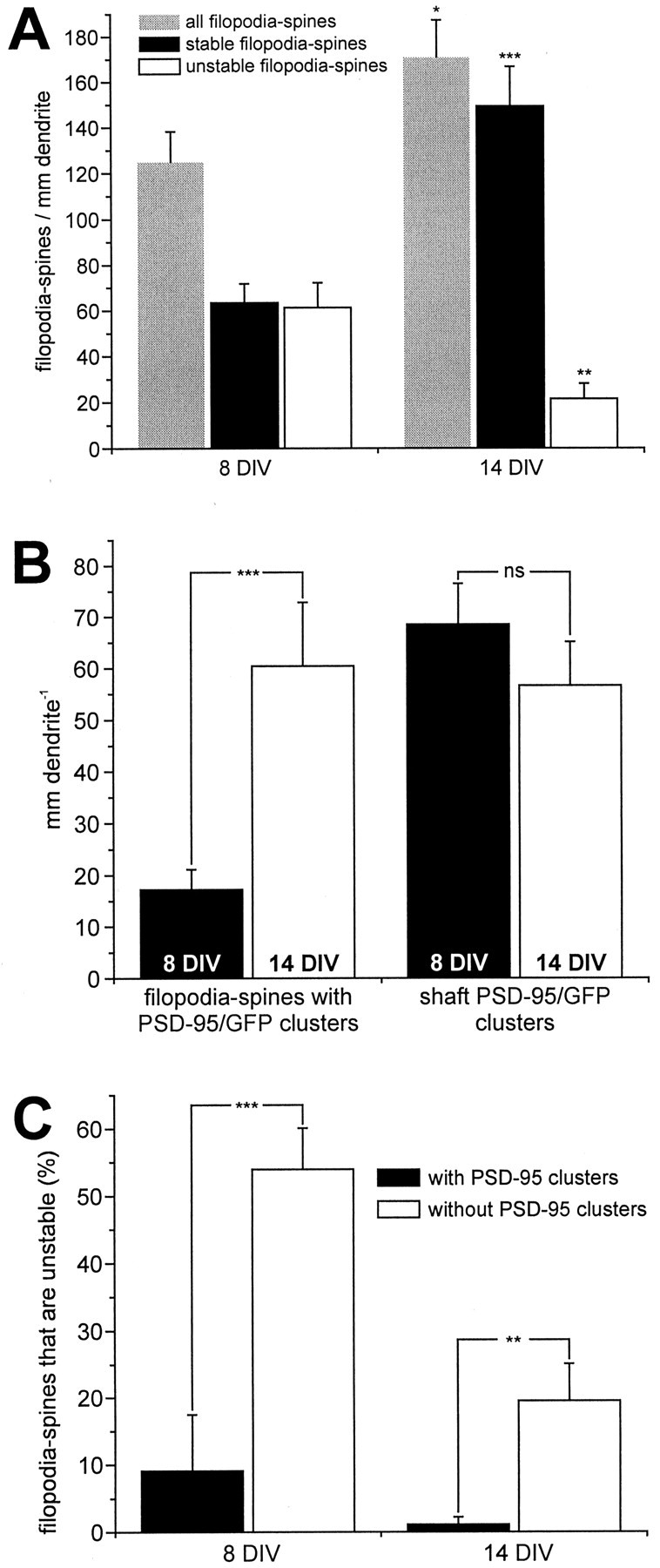Fig. 3.

Quantitation of filopodia–spine development and the association with PSD-95/GFP clusters. A, Increase in number and stability of filopodia–spines during early neuronal development. Cells were cultured for, on average, either 8 or 14 d, and filopodia–spine dynamics were imaged using confocal time-lapse microscopy over 1 hr. The total number of filopodia–spines increases (by 37%; *p < 0.05) between the two age groups. A disproportionately large increase in the number of stable filopodia–spines (by 135%; ***p < 0.001) was observed. A concomitant decrease (by 65%; **p < 0.01) in the number of unstable filopodia–spines was observed. All numbers are normalized to dendritic length. B, Increase in the number of filopodia–spines with PSD-95 clusters but not of PSD-95 shaft clusters during early neuronal development. Comparison of cells in the younger (n = 13 cells) with the older (n = 10 cells) age group indicated a significant increase in the density of filopodia–spines with PSD-95/GFP clusters (by 350%; ***p < 0.001). No significant (ns) change in the number of PSD-95 shaft clusters (21% decrease; p > 0.4). C, Filopodia–spines with PSD-95/GFP clusters are more stable than filopodia–spines without clusters. The stability of filopodia–spines was compared between filopodia–spines with PSD-95/GFP clusters and filopodia–spines devoid of clusters. Filopodia–spines without PSD-95/GFP clusters are significantly more unstable at 8 DIV (***p < 0.001) and 14 DIV (**p < 0.005) compared with filopodia-spines with PSD-95/GFP clusters (8 DIV:n = 13 neurons, 303 filopodia–spines; 14 DIV:n = 10 neurons, 440 filopodia–spines).
